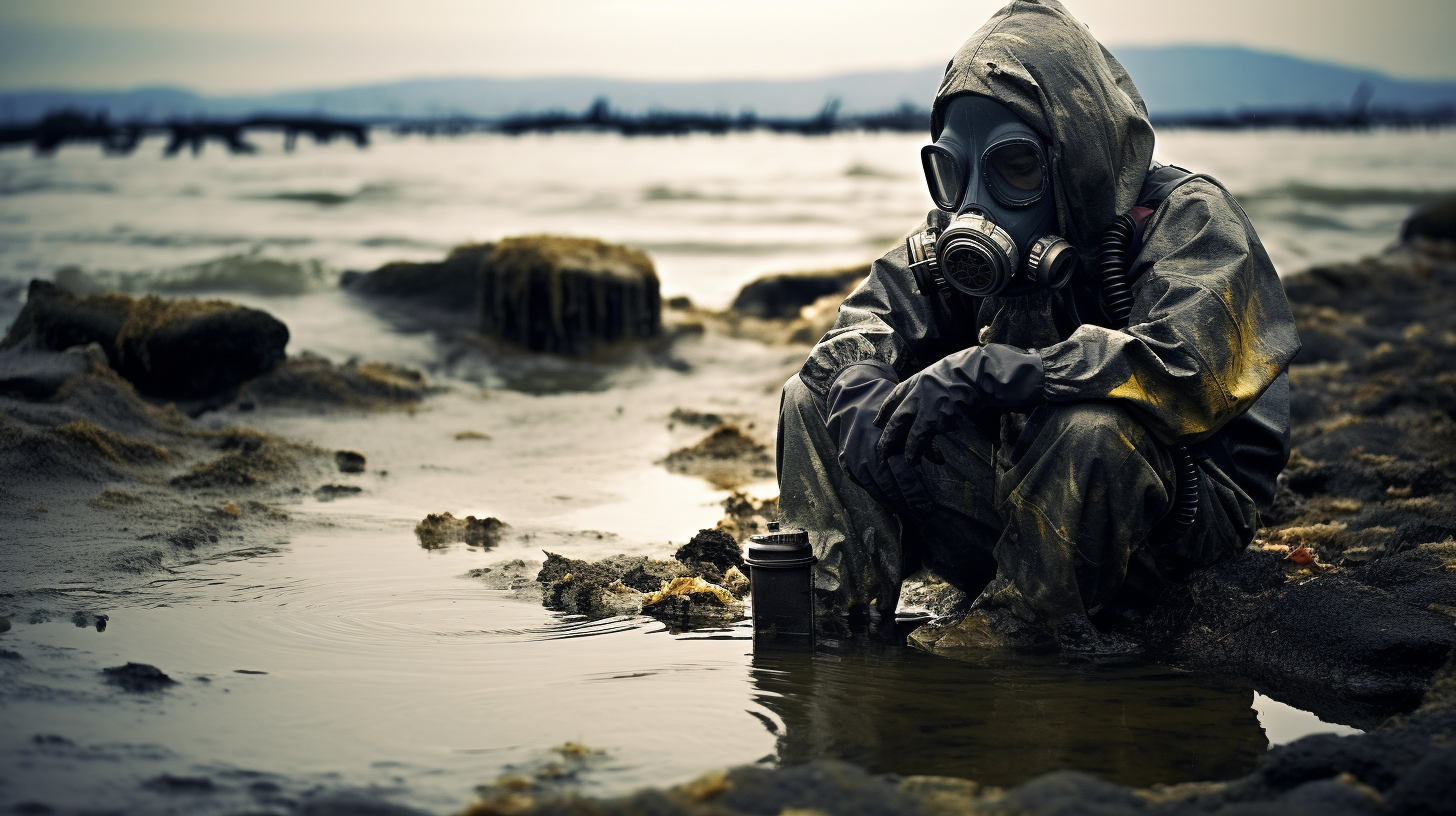In a world where the caustic waves of the future lap against the shores of our negligence, we find ourselves diving into a new kind of abyss, the Chemical Seas. In our ongoing saga that paints the grim portraits of a dystopian water-world, today we bring you another chapter, laden with the acrid scent of survival in the face of humanity’s toxic legacy.
Tides of Toxins: this isn’t about the metaphorical waves crashing upon our collective conscience, but the literal seas swirling with a menacing concoction of chemicals. Gone are the days of pristine azure; in are the eerie glows of bioluminescent algae, thriving on our excesses, casting an otherworldly yet tragic light on our marine landscapes.
Imagine the ocean as a toxic brew, where each sip holds the sum of our environmental disregard. Here, in these briny deeps, life persists, but at what cost? Mutations abound, crafting creatures both resilient and monstrous, for survival’s sake. We’re not talking about the promise of evolution, but rather the curse of adaptation to a milieu polluted by the runoff of our industries, pharmaceuticals, and the endless stream of domestic waste.
It is in these noxious waters that fishermen, like spectral characters from some cautionary tale, cast their nets hoping, not for a bountiful catch, but for something, anything, that hasn’t been tainted. Seafood markets have transformed; their stalls are less about delicacies of the deep and more about hazard classification, a grim lottery of what won’t poison its consumer. The sea’s bounty now brings a side order of trepidation with every mouthful.
Our narratives have often chronicled the acidification of oceans, the ‘despair of fishing communities’, but Tides of Toxins reaches deeper, exploring human adaptation to an unthinkable living condition. Novel diseases, borne of contaminated waters, have begun to surface, presenting medical riddles that mirror the complexity of the toxins themselves. We reflect on the resilience of humanity, the coping mechanisms evolving as quickly as the diseases in a race to outrun annihilation.
But where do the innocent creatures of the deep fit into this chemical tableau? Stripped of their color and vigor, they exist as mere shadows of their former selves, nothing more than relics of a world that once was, a past that has dissolved as surely as their vitality in the acrid waters. The change is so pervasive, our language itself must evolve to describe species now born of contamination rather than sanctuaries of biodiversity.
The tale spun today is one of caution, a narrative that unspools amidst the visceral fight for existence in what was once the Earth’s last wilderness. Horror stories of chemical behemoths, bioterror from beneath the waves, and humanity’s fruitless fight against the toxic tide—they confront us not from some distant future but in today’s stark reality. It is a tale that refuses the lull of optimism, compelling us to acknowledge these dystopian metamorphoses as irreversible scars upon the tapestry of nature.
We are left, then, to ponder a chilling irony: humanity’s great intelligence, creativity, and industry, the forces behind our proud civilizations, have also sewn the toxic seeds that sprout this harrowing, aquatic garden. In our pursuit to conquer the elements, we’ve ended not as their masters but as harbingers of their perversion.
Tales like ‘Oceans of Acid, Seas of Despair’ and ‘Carceral Seas – Fishing Communities Behind Nets of Waste’ lay the foundations of a once-unimaginable narrative that now unfolds with terrifying regularity. And with this latest tale, we sink deeper into the maw of a future we crafted with inadvertent malice towards the oceans we once revered.
Indulge in this latest narrative, if only to bear witness to the testament of human folly, to a chapter that history—if it is to be written—will recount with tears rather than awe. Take this journey into the toxic heart of the ‘Chemical Seas’—perhaps you will find not only a story of our times but also a warning for those that may yet come.
